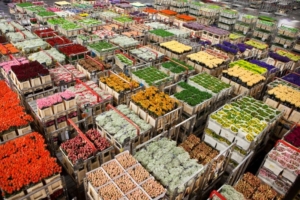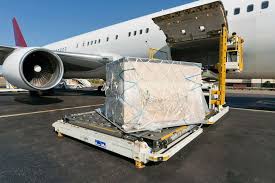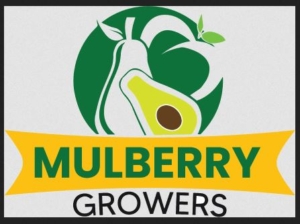Sage Importers Saudi Arabia: 7 Exclusive Tips Riyadh | Jeddah | Dammam | Jeddah Islamic Port | King Abdulaziz | Coastal KSA
The sage importers Saudi Arabia include firms that import from countries like Kenya, Middle Eastern growers, and the rest of the world. Mulberry Growers is one of the sage exporters to Saudi Arabia. Here, we present to you the whole picture of sage importers in Saudi Arabia so that you understand how the imports happen and the way the market works.


How the Largest Suppliers Procure and Distribute Sage in Saudi Arabia
In Saudi Arabia, the importation of produce is often characterized by a centralized procurement and distribution model. Major players in the market, such as large-scale importers and distributors, control the bulk of the supply chain. These entities purchase produce in large volumes from international sources and manage its distribution throughout the country. This centralized system allows for streamlined logistics, bulk purchasing discounts, and standardized quality control, which are crucial given the country’s vast geography and varied regional demands. This model also helps mitigate the impact of fluctuations in global produce prices on the local market.

Saudi Arabia has established several regional distribution hubs to facilitate the efficient distribution of imported produce. These hubs are strategically located in key cities such as Riyadh, Jeddah, and Dammam. Each hub serves as a major point for receiving, storing, and redistributing produce to smaller regional markets. The existence of these hubs helps in reducing transportation costs, minimizing spoilage, and ensuring that fresh produce reaches local markets in a timely manner. These hubs, loved by sage importers Saudi Arabia, are equipped with advanced cold storage facilities to maintain the quality of perishable items.
Given its geographical layout, Saudi Arabia’s importation of produce relies heavily on its seaports. The country’s major ports, including Jeddah Islamic Port and King Abdulaziz Port in Dammam, play a crucial role in handling imported produce. These ports are equipped with specialized facilities for inspecting and processing agricultural goods that sage importers Saudi Arabia bring into the KSA, which include quarantine services and cold storage units. The efficiency and capacity of these ports are critical to ensuring that large quantities of produce can be imported and distributed throughout the country without significant delays or quality degradation.
Regulatory Framework and Standards impacting sage importers Saudi Arabia
The Saudi Food and Drug Authority (SFDA) oversees the regulatory framework governing the importation of produce. The SFDA enforces stringent standards for the quality and safety of imported agricultural products. This includes guidelines on pesticide residues, hygiene, and packaging. Importers must comply with these regulations to ensure that sage importers Saudi Arabia’s products meet the required standards before they can be distributed within the country. The rigorous inspection processes help to maintain high food safety standards and protect consumer health, which is a priority given the country’s dependency on imported food.
Market Dynamics and Competition
The sage herbs market in Saudi Arabia is increasingly competitive, with both local and international players vying for market share. Large sage importers Saudi Arabia often face competition from smaller, niche distributors who specialize in specific types of produce or cater to particular regional preferences. This competitive landscape drives innovation in distribution methods and marketing strategies. For instance, some sage importers Saudi Arabia use direct-to-consumer sales models or online platforms to reach customers more effectively, which can disrupt traditional distribution channels and influence market dynamics.
Regional Preferences and Demand Variations important for sage importers Saudi Arabia
There are notable regional variations in produce demand across Saudi Arabia. For example, the coastal regions like Jeddah have a higher demand for fresh sage herbs, while the central region, including Riyadh, may have different preferences, such as for both dry and fresh sage herbs. These regional preferences affect how produce is imported and distributed. Importers often tailor their supply chains and inventory to meet the specific demands of each region, which can involve sourcing different types of produce from various international markets to match local consumer tastes.
Seasonal variations play a significant role in the importation and distribution of produce in Saudi Arabia. Sage may have peak seasons in some countries of origin, affecting their availability and pricing in the Saudi market. Selecting an exporter like Mulberry Growers, who utilizes multiple methods and farms in diverse climates to maintain an all-year-round supply of sage is important for sage importers Saudi Arabia. Importers should do so to adeptly manage their supply chains to account for these seasonal changes. This involves forecasting demand, adjusting import volumes, and optimizing storage and distribution strategies to ensure a steady supply of fresh produce throughout the year, despite the fluctuations in availability and prices.
Use of Technology and Logistics among sage importers Saudi Arabia

Technology plays a pivotal role in the logistics and distribution that is used by sage importers Saudi Arabia. Advanced logistics systems, including GPS tracking, automated inventory management, and temperature-controlled transport, are employed to enhance efficiency. These technologies help in monitoring the movement of produce, ensuring that it remains within optimal temperature ranges during transit, and managing stock levels effectively. The use of technology not only improves the reliability of the supply chain but also helps in reducing operational costs and increasing overall efficiency.
Impact of Economic Factors on sage importers Saudi Arabia
Economic factors such as fluctuations in oil prices and changes in currency exchange rates can significantly impact sage importers Saudi Arabia in the importation of produce to Saudi Arabia. Since the country relies heavily on imports for its food supply, changes in global oil prices can affect shipping costs, while currency fluctuations can influence the cost of purchasing produce from international markets. Importers must navigate these economic variables, often adjusting their pricing strategies and cost structures to maintain profitability and competitive pricing in the local market.
Role of Government Incentives and Support on sage importers Saudi Arabia
The Saudi government provides various incentives and support mechanisms to facilitate the importation and distribution done by sage importers Saudi Arabia. This includes subsidies for logistics, tax benefits, and investment in infrastructure improvements. The government’s support helps to alleviate some of the financial pressures faced by importers and distributors, making it easier to maintain a stable supply of produce. Additionally, initiatives to enhance trade relations and streamline customs processes further support the efficient importation and distribution of agricultural goods, contributing to market stability and growth.
Mulberry Growers Exports Sage to Saudi Arabia:

If you are a business or trader requiring sage exported to Saudi Arabia, start here:
- Website: www.mulberrygrowers.com
- Our Email: commercial@mulberrygrowers.com
- Call/WhatsApp: +254 716 150 111 OR +254 748 897 749